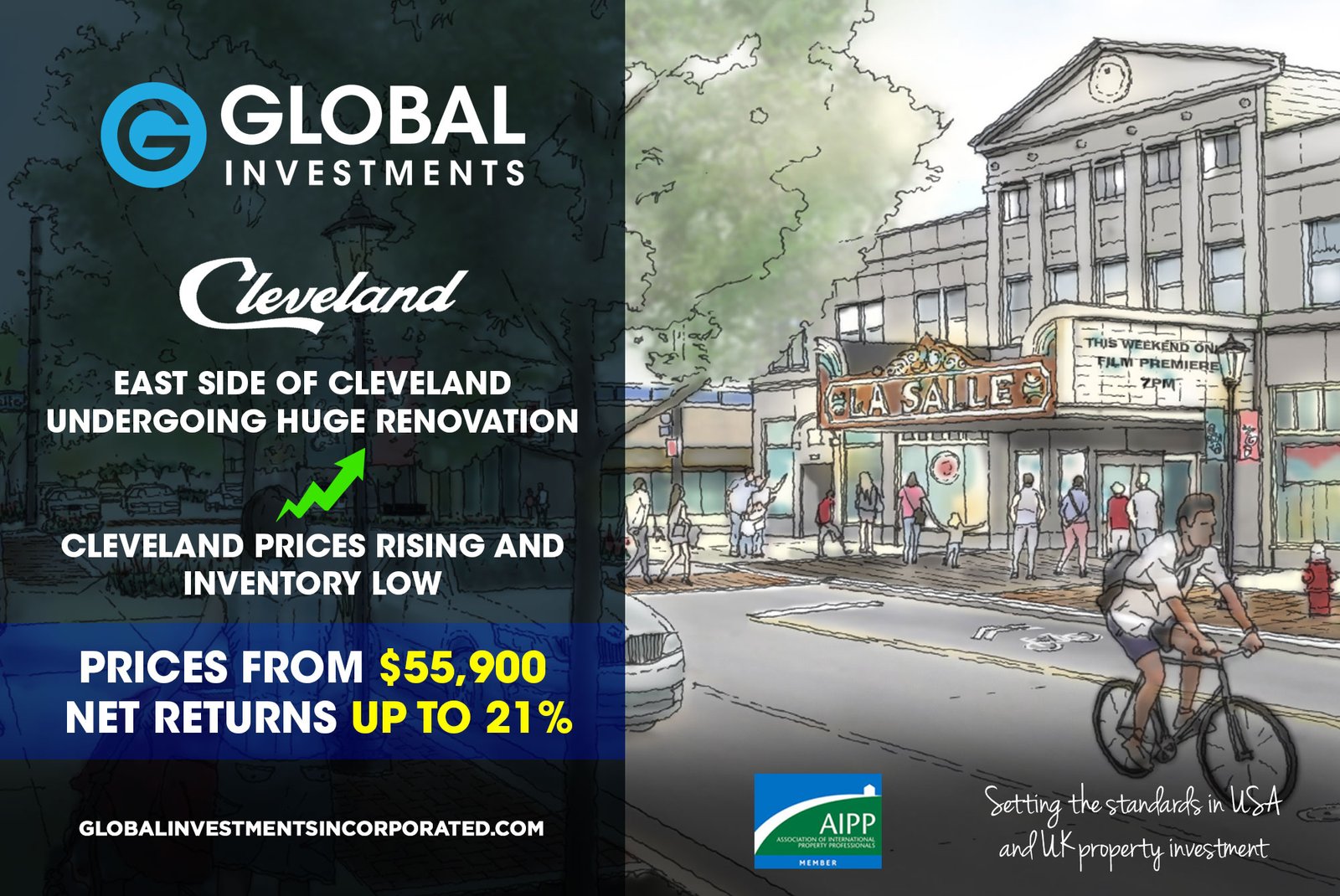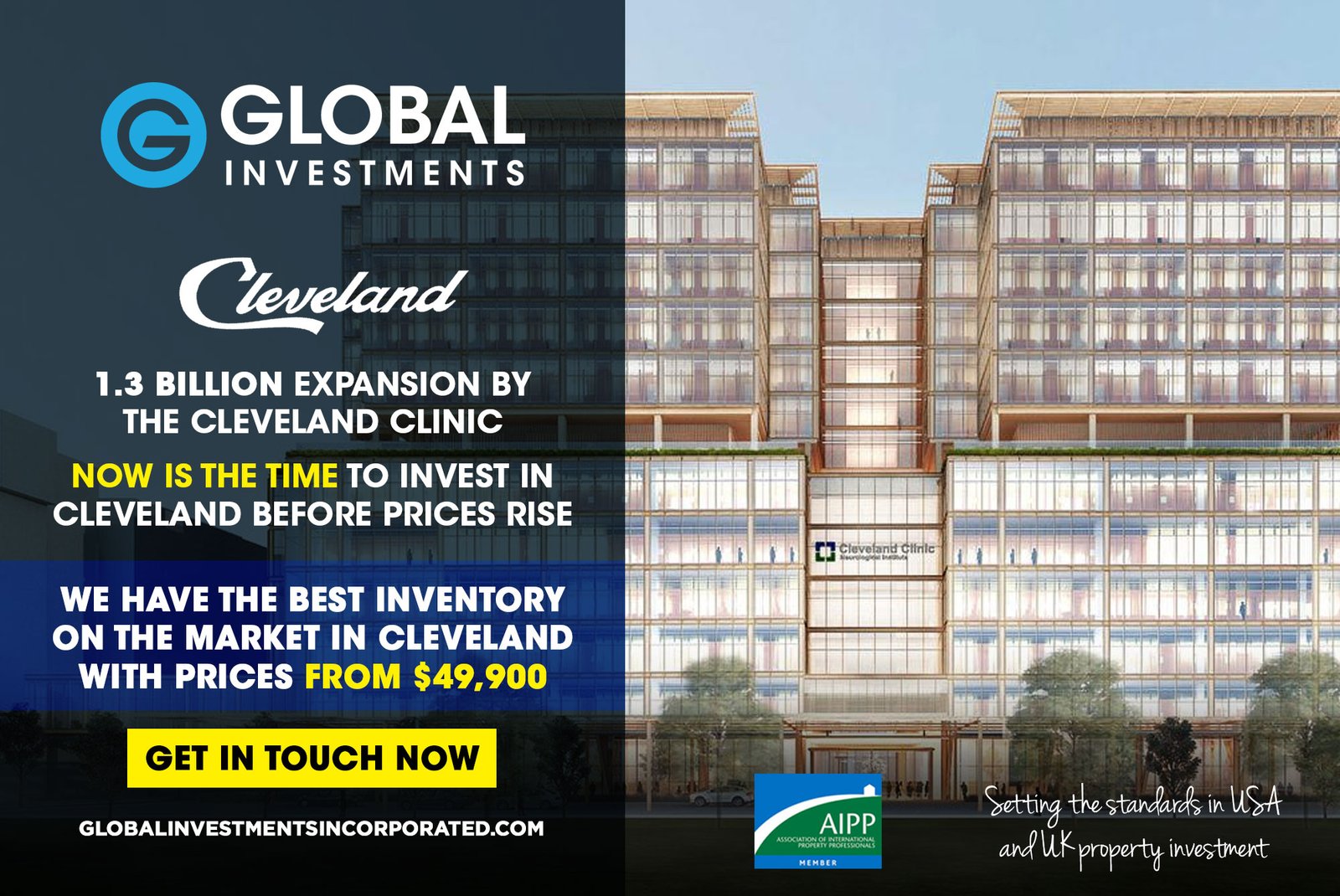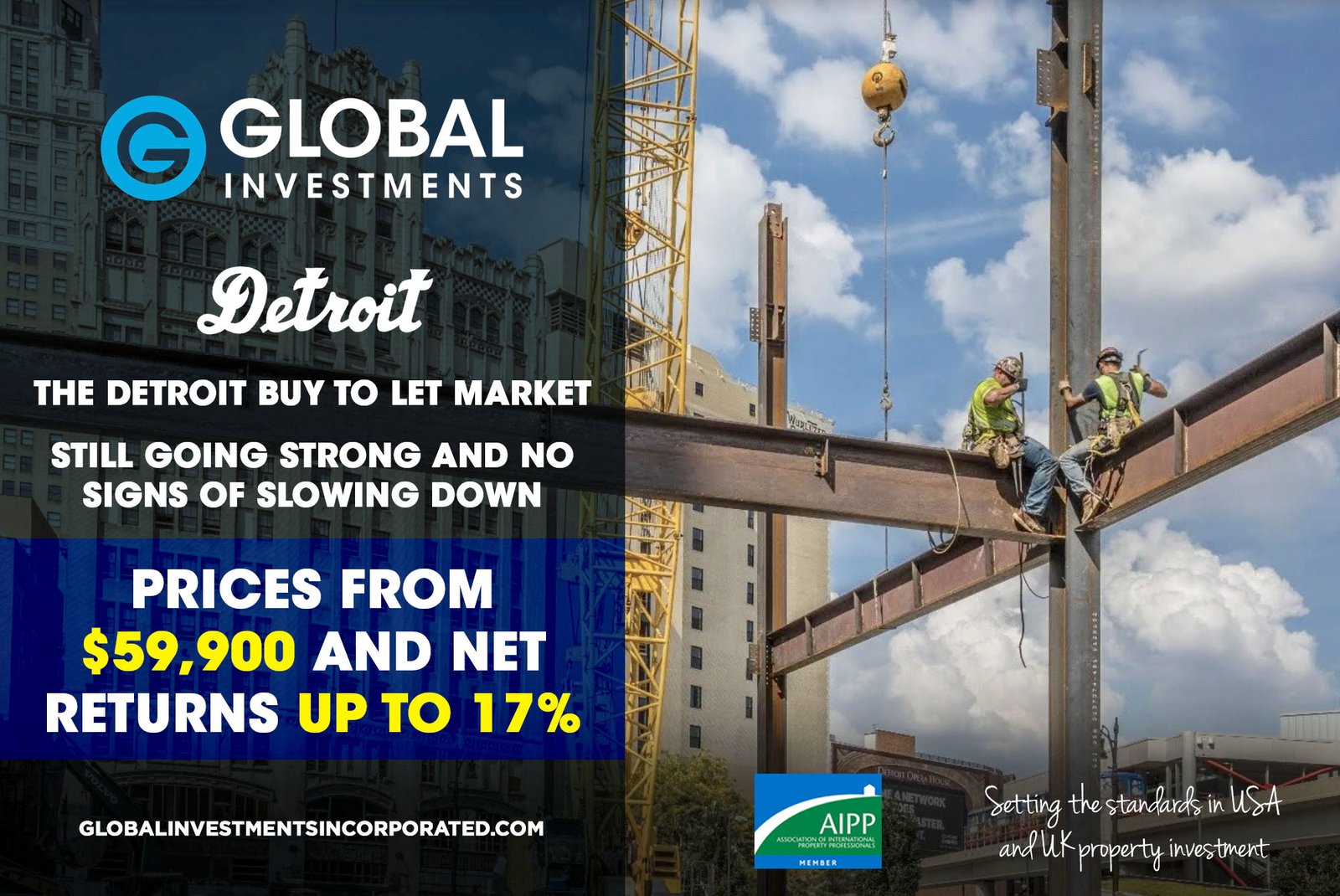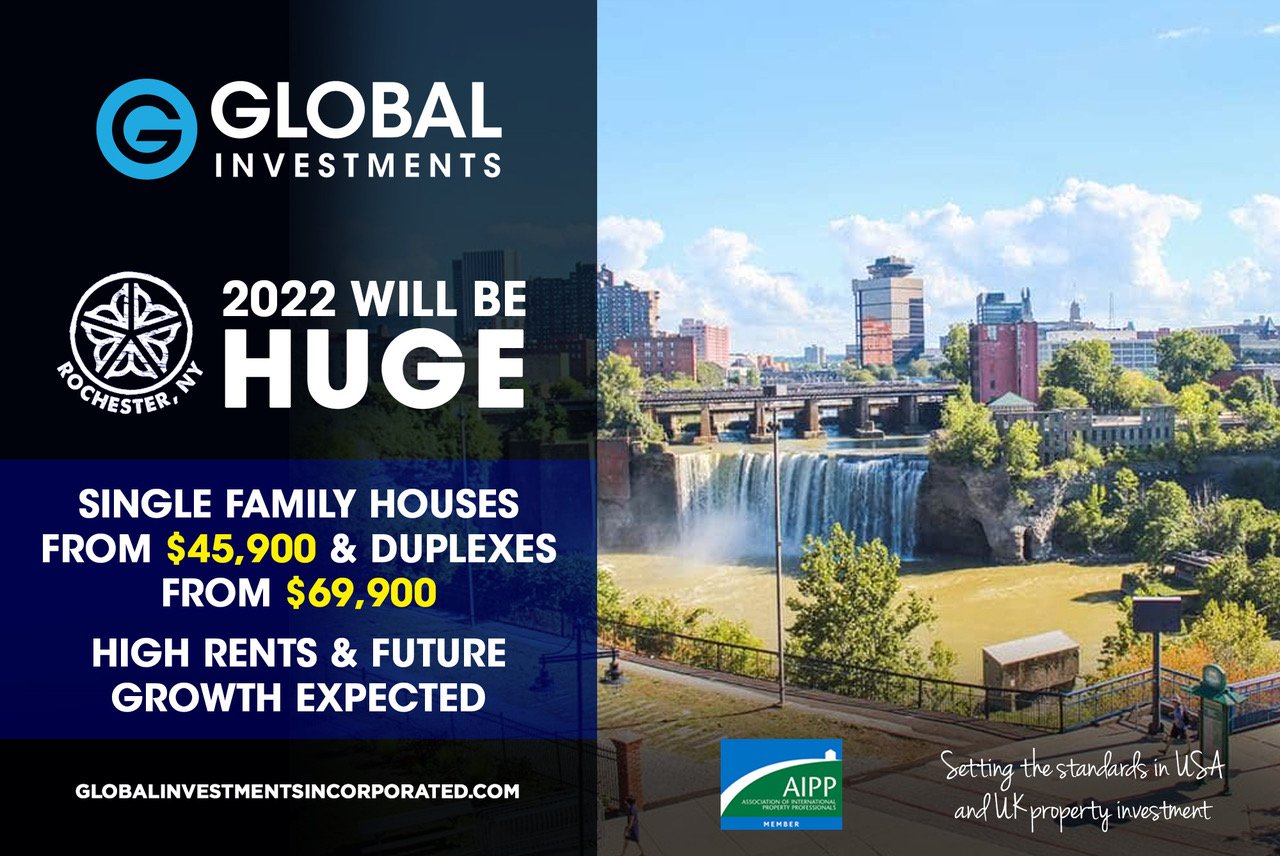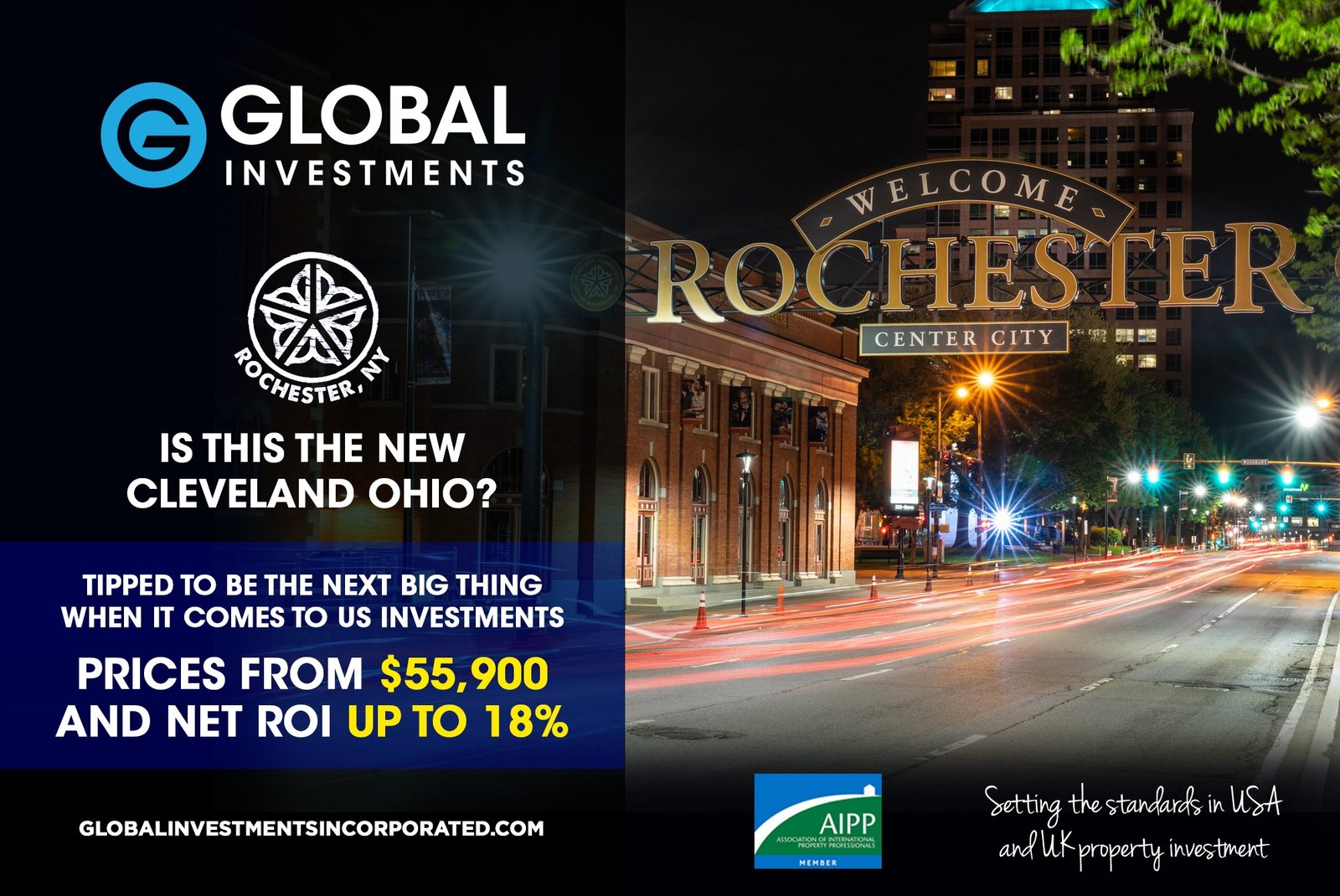Cleveland Ohio has been the best selling product for Global Investments for the past 3 years and is still going strong with a huge demand by both overseas and domestic investors. More than 50% of the households in Cleveland are occupied by renters, making the market perfect for rental property investors. Many recent reports have Cleveland as no.5 on the list of top housing markets to watch in 2021. The real estate market in Cleveland is competitive, with some homes going under contract the same day they are listed. One reason homes are selling quickly in Cleveland is that prices here are still very affordable, with the median listing price for a home in Cleveland only $100,000. Global Investments work with some of the top turn key suppliers and have available renovated and tenanted houses from as little as $55,000. The diversified economy helps keep the rental market strong in Cleveland. For a city that once relied on the manufacturing industry for growth, Cleveland has done a remarkable job of transforming its economy into a well-balanced blend of service, high tech, blue and white collar employment. Located along the southern shore of Lake Erie, Cleveland is just across from the Canadian border. The metro area is home to the Rock and Roll Hall of Fame, one of the worlds finest orchestra and major professional baseball, football, and basketball teams. Here’s just a few reasons why Cleveland could be one of the best places to invest in rental property in 2021. POPULATION GROWTH In its in-depth study, “The Fifth Migration: A Study of Cleveland Millennials”, the Cleveland Foundation reports Cleveland ranks among the top 10 U.S. cities for population growth of college-educated millennials. That’s great news for rental property investors, because as CNBC recently noted, rental demand across the country is soaring as more millennials say it’s cheaper to rent than to own. Key Population Stats: Cleveland has a city population of nearly 400,000 and a metropolitan population of more than 2 million, ranking Greater Cleveland as the 33rd-largest metro area in the U.S. Population of Cleveland has declined 0.09% year-over-year. Net migration in Cleveland has remained steady, decreasing by only 870 residents since 2018. The median age of people in Greater Cleveland is 41, with about 37% of the population between the ages of 20 and 49. In the City of Cleveland, the median resident age becomes more youthful, dropping down to about 36 years. JOB MARKET The unemployment rate in Cleveland is down to just 5.8% (as of Nov. 2020), according to the U.S. Bureau of Labor Statistics (BLS). As the economy in Cleveland continues to recover, job sectors showing the fastest signs of recovery include construction, manufacturing, and financial activities. While job growth in Cleveland has historically lagged behind some of the city’s peers, a recent report in Crain’s Cleveland Business notes that economic growth in Cleveland surpassed Tulsa, Albuquerque, and Memphis. The renewed focus on space exploration is good news for the fuel cell industry and the NASA Glenn Research Center in Cleveland. Companies with corporate headquarters in Cleveland include Applied Industrial Technologies, Cliffs Natural Resources, and Sherwin-Williams Company. The Federal Reserve Bank of Cleveland, one of only 12 Reserve Banks in the U.S., is in downtown Cleveland. Key Employment Stats: GDP of Cleveland is more than $118 billion, an increase of more than 12% over the past 10 years. Employment growth in Cleveland is 1.43% year-over-year, while median household incomes have increased by 7.08% over the same period.e metro area. The healthcare sector is one of the major employers in Cleveland, including the Cleveland Clinic, University Hospitals of Cleveland, MetroHealth, and Medical Mutual of Ohio. Biotechnology, fuel cell research, and technology are three of the growing employment sectors in Cleveland. In fact, Forbes recently speculated that Cleveland might become the country’s next technology hub. Despite the shift to professional service and high tech business, construction and manufacturing in Cleveland still account for a significant amount of employment growth. Nearly 3,000 new manufacturing jobs were created over the last couple of years, while the construction industry added more than 1,700 new jobs during the same period. Since 2009, per capita income in Cleveland has steadily grown and is now at $34,200 while median household income is $57,228. Nearly 32% of the adults in Cleveland hold an undergraduate degree or higher, about 10% higher than the rate in Ohio. Cleveland is served by five Interstate Highways and several freight railroads. The Port of Cleveland is a major bulk freight terminal on Lake Erie. More than 5.8 million domestic and international passengers traveled through the Cleveland Hopkins International Airport (CLE) through the first half of 2019, while shipping facilities at CLE have handled more than 51,000 tons of cargo over the same time period. Playhouse Square in Cleveland is the 2nd-largest performing arts center in the country, right behind New York’s Lincoln Center, and the Cleveland Museum of Arts is home to more than 40,000 works. Real estate investors who are pro sports fans will find Cleveland offers a winning combination: Major League Baseball’s Cleveland Indians, the NFL’s Cleveland Browns, and the NBA’s Cleveland Cavaliers. REAL ESTATE MARKET Cleveland is ranked as one of the top housing markets to watch in 2021 by Forbes. The affordability of single-family homes in Cleveland is especially appealing to remote real estate investors and to people working from home. Successful real estate investors know how to make money in any market cycle, which is one reason people are investing in Cleveland rental property. Cleveland is one of the most recession-resistant markets in the U.S., according to Crain’s Cleveland Business. When measured by the investment variables of home price volatility, home sales flips, average loan-to-value, and home price-to-income ratio, Cleveland ranks as one of the top four markets with the lowest risk of a real estate dip. Key Market Stats: Zillow Home Value Index (ZHVI) for Cleveland is $79,166 through November 2020. Home values in Cleveland have increased by 18.8% year-over-year and are forecast to grow by another 13.1% in the next 12 months. Over the past five years home values in Cleveland have increased by nearly 76%.
